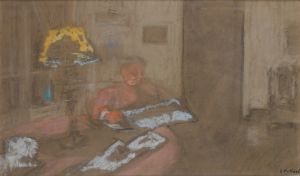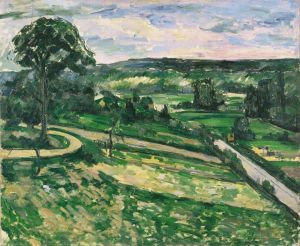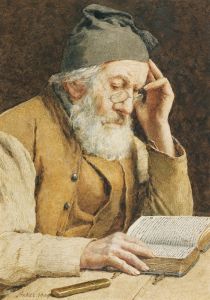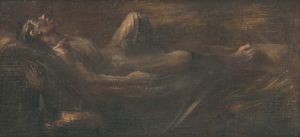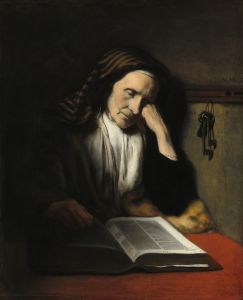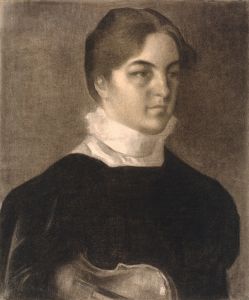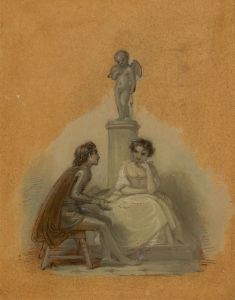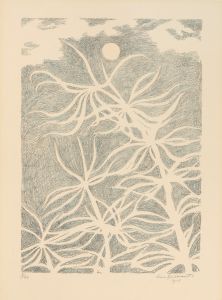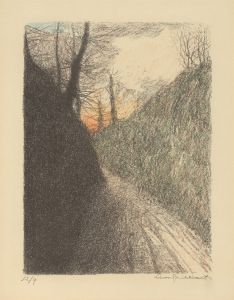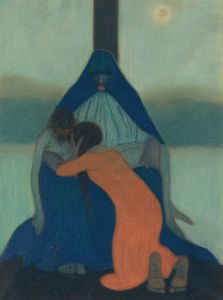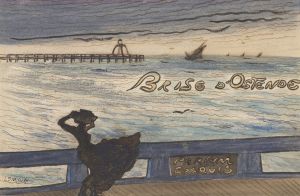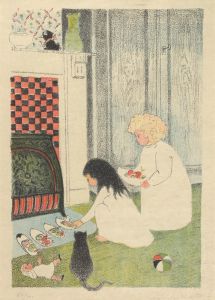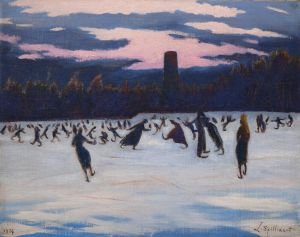
De waterkar
A hand-painted replica of Léon Spilliaert’s masterpiece De waterkar, meticulously crafted by professional artists to capture the true essence of the original. Each piece is created with museum-quality canvas and rare mineral pigments, carefully painted by experienced artists with delicate brushstrokes and rich, layered colors to perfectly recreate the texture of the original artwork. Unlike machine-printed reproductions, this hand-painted version brings the painting to life, infused with the artist’s emotions and skill in every stroke. Whether for personal collection or home decoration, it instantly elevates the artistic atmosphere of any space.
Léon Spilliaert was a Belgian symbolist painter and graphic artist known for his unique style that often combined elements of symbolism, expressionism, and surrealism. One of his notable works is "De waterkar" (The Water Cart), which exemplifies his distinctive approach to art.
"De waterkar" was created during a period when Spilliaert was deeply influenced by the coastal environment of Ostend, his hometown. This painting reflects his fascination with the interplay of light and shadow, as well as his interest in capturing the mood and atmosphere of his surroundings. Spilliaert often explored themes of solitude and introspection, which are evident in this work.
The painting depicts a solitary figure pushing a water cart along a deserted street. The composition is characterized by its stark contrasts and the use of muted colors, which create a sense of melancholy and isolation. Spilliaert's use of perspective and the elongated shadows cast by the figure and the cart contribute to the overall sense of eeriness and introspection. The scene is devoid of any bustling activity, emphasizing the quiet and contemplative nature of the moment.
Spilliaert's technique in "De waterkar" showcases his mastery of line and form. He often employed a minimalist approach, stripping down the elements of the scene to their essentials. This allowed him to focus on the emotional and psychological aspects of the subject matter. The simplicity of the composition draws the viewer's attention to the central figure and the surrounding environment, encouraging a deeper engagement with the painting's themes.
The artist's work is often associated with the broader symbolist movement, which sought to express the emotional and spiritual dimensions of human experience. Spilliaert's paintings frequently explore the inner world of his subjects, delving into themes of existential reflection and the passage of time. "De waterkar" is a prime example of this exploration, as it captures a fleeting moment that invites contemplation and introspection.
Throughout his career, Spilliaert was influenced by a variety of artistic movements and figures, including the works of Edvard Munch and James Ensor. However, he developed a unique visual language that set him apart from his contemporaries. His ability to convey complex emotions through simple yet powerful imagery has earned him a lasting place in the history of modern art.
"De waterkar" is representative of Spilliaert's broader body of work, which often features solitary figures set against stark, atmospheric backdrops. His paintings continue to resonate with audiences today, offering a window into the artist's introspective world and the universal themes of solitude and reflection.
Léon Spilliaert's contribution to the art world extends beyond his individual works. His innovative approach to composition and his exploration of the human psyche have influenced generations of artists. "De waterkar" remains a testament to his skill and vision, capturing the quiet beauty and profound depth that characterize his oeuvre.





